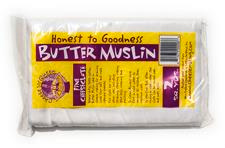With the intent of someday having dairy goats or sheep (I don't think I could handle the volume of milk from a cow) I thought it best to start practicing making some cheeses at home. Mozzarella is often the first cheese people start with, but I really love feta and other sharp cheeses. After looking at the recipe of what was required I felt it was definitely do-able as my first cheese.
First Feta
Feta cheese is traditionally made with goats' milk. But, considering the price of goats' milk at the grocery store I decided to experiment right off the bat with half goat and half cows' milk. I'm glad I did, because it still turned out quite sharp and "goat-y" (although I like a little "goat-i-ness" in some cheeses).
In the second batch a couple weeks later I tried straight cows' milk, to which I added just a tad extra lipase powder. A little bit of lipase powder is added to enhance the sharpness flavor, even if using all goats' milk. Frankly, there wasn't a huge difference between the two batches, so I'll probably continue to make it with cows' milk until I get my own goats someday.
Equipment for Making Feta
1) A large stainless steel pot (an enamel pot is ok, just no aluminum) that can easily hold one gallon.
2) A moderately sized colander.
3) A large piece of "butter muslin". Butter muslin is a lightweight fabric that's a little tighter than regular cheesecloth, and better suited to draining soft cheeses.
4) A slotted spoon or ladle.
5) Food thermometer.
6) String to tie up the curds while draining in the cheesecloth.
Ingredients for Feta
- One gallon of goats' milk (but half goat, half cow works great, too)
- Lipase powder
- Mesophilic cheese starter culture
- Rennet
- Un-chlorinated water (most municipal water is chlorinated)
The Procedure
Allow yourself a day to get to your finished cheese. Start with putting your gallon of milk in the stainless steel pot and start to gently heat it. Bring it to about 86°F. While the milk is slowly heating prepare your lipase: add ¼ teaspoon lipase powder to ¼ cup water* and let sit for 15-20 minutes. Stir the diluted lipase into the milk.
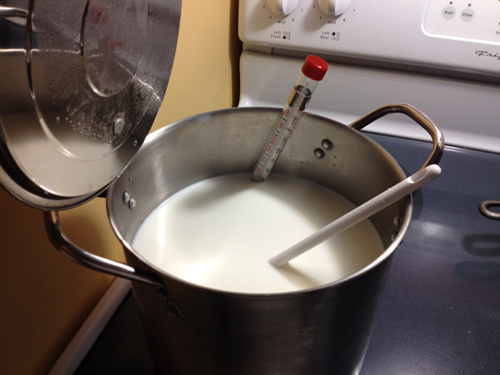
Add one packet of the mesophilic starter bacteria to the milk, stir gently, cover, and let sit for one hour. Occasionally add a little heat to keep it around 86°F. Prepare the rennet: dilute ½ teaspoon liquid rennet (or ½ a rennet tablet) into ¼ cup water*. Add this prepared rennet to the milk and let sit for another hour (covered), trying to keep it close to 86°. After an hour it will look like this (the milk solid coagulating and pulling away from the sides of the pot):
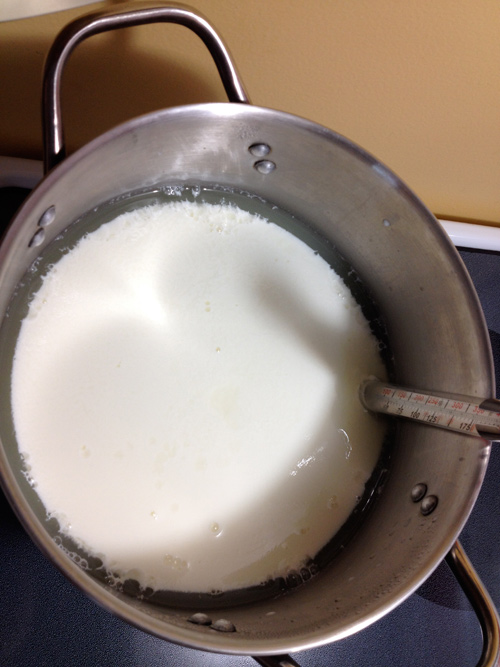
Cut the curdled milk into cube-ish pieces within the pot. A very long knife that reaches all the way to the bottom it necessary here (I used a very long bread knife I happened to have). Let the curds sit undisturbed for another 10-15 minutes. More whey will start to appear around the curds. Then stir the curds gently for 15-20 minutes.
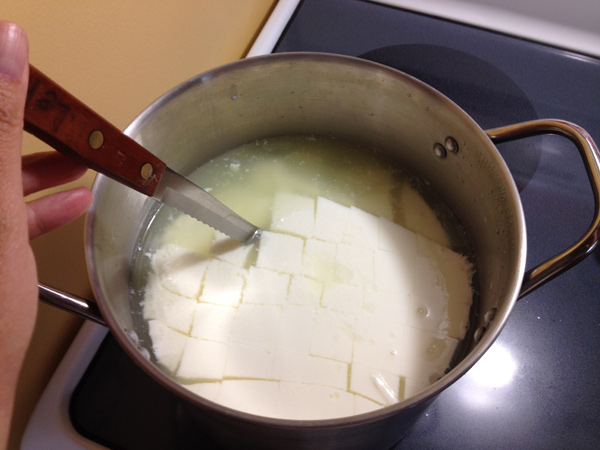
Lay your butter muslin over a colander and scoop the curds into the cloth. I put a wide bowl under the colander to catch more of the whey coming out mostly because I was curious to see how much total whey would result from making this cheese. If you're not interested in catching the whey then just let it drain into the sink. Carefully gather up the edges of the muslin, tie it shut, and hang over the sink for at least 6 hours (some recipes say 12!).

After hanging for several hours open up the cloth to reveal the mass of semi-compressed curds. It has kind of an odd shape to it, but it's much stiffer than several hours ago.
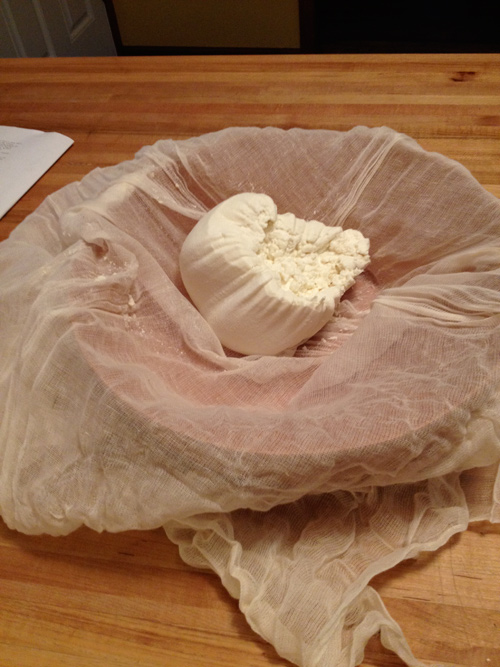
Some feta recipes say to cut into cubes, salt the curds, and store in the fridge for 4-6 days. Other recipes say to slice this mass into 1-inch thick slabs and soak in a brine solution for 30 days. I chose to do the cube method and put them into a tupperware-type container in the fridge. After a few days the mass of curds started to meld together and turn into something like cream cheese (with a feta flavor). Certainly not bad, but not what I expected. Next time I'll experiment with the brine.
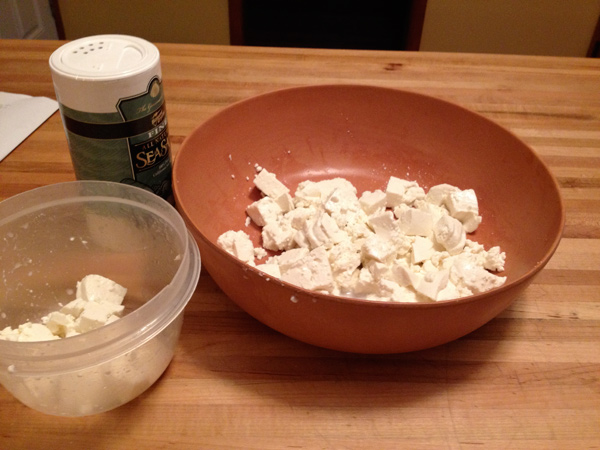
Best of luck with your own feta cheese! It's a great first cheese to start with because you really don't need much equipment and supplies to try it.
*Make sure all water is unchlorinated!

